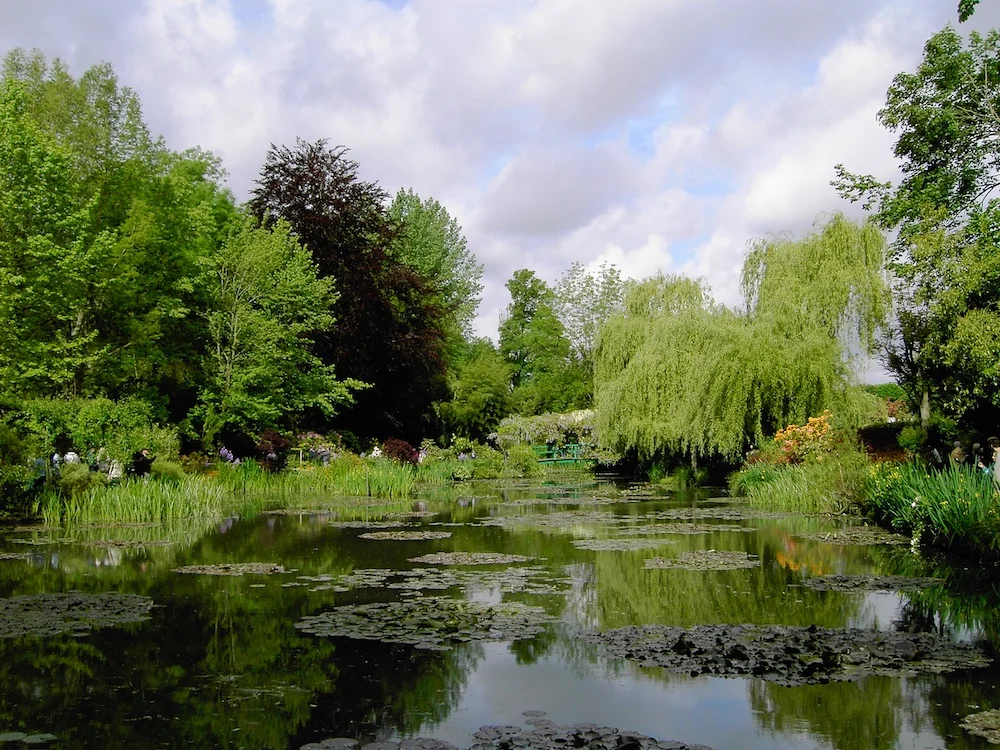
Home > World Gardens >
Monet's Garden is a world-famous garden located in the village of Giverny, in Normandy, France. It is renowned for its association with the renowned Impressionist artist Claude Monet, who lived in Giverny from 1883 until his death in 1926.
Monet discovered the village of Giverny in 1883 and was captivated by its natural beauty. He decided to settle there and transformed the property into an artistic haven. Monet's Garden became the inspiration for many of his most famous works, including his series of water lilies.
The garden is divided into two main parts: the Clos Normand and the Water Garden.
This part of the garden is situated in front of Monet's house and is characterised by colourful flowerbeds arranged in a formal, geometric pattern. It features a wide variety of flowers, including tulips, irises, roses, and peonies. Monet carefully selected and arranged the flowers to create a harmonious and ever-changing display of colours.
The Water Garden is located at the back of Monet's house and is famous for its water lily pond and Japanese bridge. It is a serene and tranquil space with willow trees, bamboo, and a collection of water lilies. Monet's paintings of the water lilies and the Japanese bridge have become iconic representations of his work.
Monet was influenced by Japanese art and aesthetics, and this influence is evident in his garden. He incorporated Japanese elements, such as the Japanese bridge and the use of water as a reflective surface, to create a sense of tranquility and harmony.
Monet's Garden features a wide variety of plant species, including both native and exotic flowers. Monet was known for his love of color, and he carefully selected flowers that would provide a vibrant and ever-changing palette throughout the seasons.
After Monet's death, his garden fell into disrepair. However, it was eventually restored and opened to the public in 1980. The restoration work aimed to recreate the garden as closely as possible to Monet's original vision, using his paintings as references.
Today, visitors can explore Monet's Garden and experience the same beauty that inspired the artist. They can stroll through the flowerbeds, cross the famous Japanese bridge, and admire the water lilies on the pond. Monet's house has also been preserved and is open to the public, allowing visitors to see the rooms where he lived and worked.
Monet's Garden has had a significant impact on art and culture. It continues to inspire artists, gardeners, and nature enthusiasts from around the world. Monet's paintings of his garden are celebrated masterpieces that have left an indelible mark on the art world.
Visiting Monet's Garden in Giverny offers a unique opportunity to step into the world that inspired one of the most influential artists in history. The garden's beauty, serenity, and connection to Monet's artistic legacy make it a must-visit destination for art lovers, garden enthusiasts, and those seeking a glimpse into the creative mind of Claude Monet.

(Image:By Andrew Horne - Own work (Original text: I (AndrewHorne (talk)) created this work entirely by myself.), Public Domain, https://commons.wikimedia.org/w/index.php?curid=10551376)
To find out more about Monet's Garden, Giverny , or if you want to visit, Click Here.
RHS Garden, Wisley
Woking, United Kingdom
Royal Botanic Garden Sydney
Sydney, Australia
Koishikawa Korakuen Gardens
Tokyo, Japan
RHS Harlow Carr
Harrogate, United Kingdom
Pamplemousses Botanical Garden
Pamplemousses, Mauritius
Lalbagh Botanical Garden
Bangalore, India